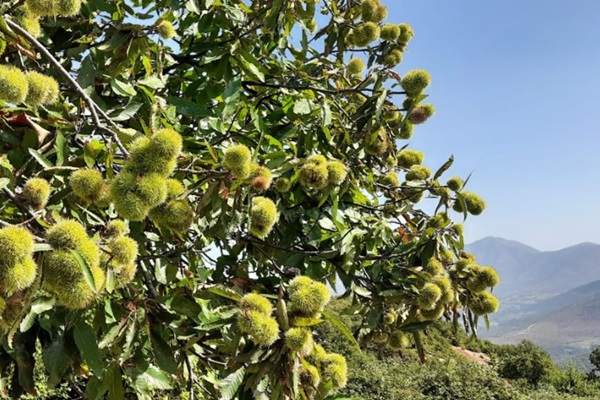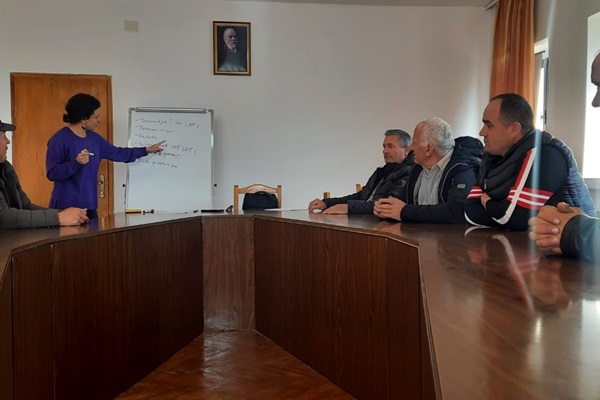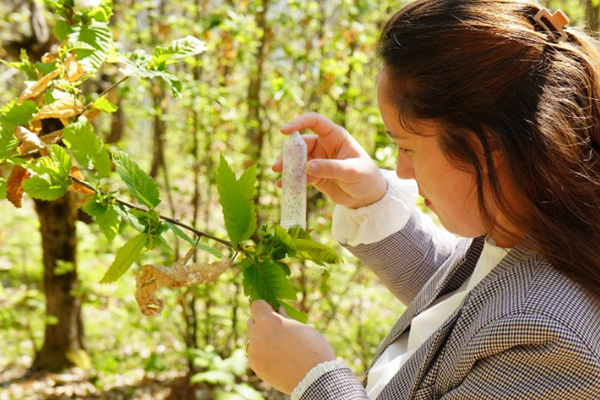Tropoja, nestled in the Albanian Alps, is a region where the allure of its natural beauty is matched by its rich cultural tapestry. This area, renowned for its scenic landscapes and historical significance, also stands out for its unique and authentic culture, and its folk practices in particular. Tropoja traditional folk dance has been included on the UNESCO list of Intangible Cultural Heritage, and the nature, culture, tourism and agriculture in Tropoja are the main drivers of rural life. The Tropoja villages are skilled in the production of many distinctive agricultural products that have gained a name for themselves, both at home and abroad. The Tropoja villages are well known for their chestnuts and chestnut honey, as well as their highland blueberries, but face a constant struggle against plant and animal pests and diseases, as well as weak rural infrastructure and the outmigration of young people.
In parallel with these threats, Tropoja is faces challenges also in exploiting opportunities offered by digitalization. The region grapples with issues related to stable Internet access, digital literacy and the low availability of digital services. In the face of these challenges, smartphones have become the primary digital tool among residents, facilitating their access to social media, online communication and such government services as e-Albania.
Challenges
DVI interventions

Geo-spatial mapping of Tropoja’s chestnut forests
In 2023, FAO initiated a programme for the biological pest control of the Asian Chestnut Gall Wasp affecting the Chestnut forests and communities in Tropoja. With the support of Albanian State Authority for Geospatial Information, FAO is developing a geo-spatial mapping of chestnut forests, by using satellite imagery with high resolution in order to monitor land cover shifts and track forest health status over time.

GPS tracking of the chestnut route
In 2024, FAO initiated the GPS-tracking of the Chestnut route in Tropoja, Albania. Chestnut forests represent an important source of income for silvo-pastoral communities, but also for locals, visitors, and businesses connected to this rural attraction. With the support of local guides and Albania’s Ministry of Tourism and Environment, FAO plans to make the GPS-tracking accessible to a wide range of users via dedicated QR codes and free-of-charge mobile applications for route navigation.

Digital marketing capacity development
In 2024, FAO conducted a participatory assessment of the digitalization readiness and needs of Tropoja villages, Albania. With the local support of the Digital Roots, FAO is developing marketing capacities among rural businesses, particularly farmers, women and youths. Training and coaching sessions are delivered to facilitate the integration of digital technologies into new or existing rural services, such as online booking platforms, web-based applications, social medias, instant messaging or e-commerce channels.
Highlights
Video
Launch of the SDG Joint Programme: Digital Agriculture and Rural Transformation in Albania (DART)
08/11/2024
Organized by the Ministry of Agriculture and Rural Development of Albania with support from the United Nations implementing agencies, the “Digital Agriculture and Rural Transformation in Albania” (DART) inception workshop will gather key partners to discuss and co-design pathways for sustainable digital transformation in Albania’s agriculture.
Digital Villages in Action in Europe and Central Asia: Focus on Albania
10/01/2024
Digital Villages in Action in Europe and Central Asia virtual event launched DVI actions in eight countries, bringing together policy actors, stakeholders, partners, and beneficiaries. Barbara Battioni Romanelli, UN Fellow of FAO Albania discussed Albania’s progress and plans for the introduction of DVI in the country.





